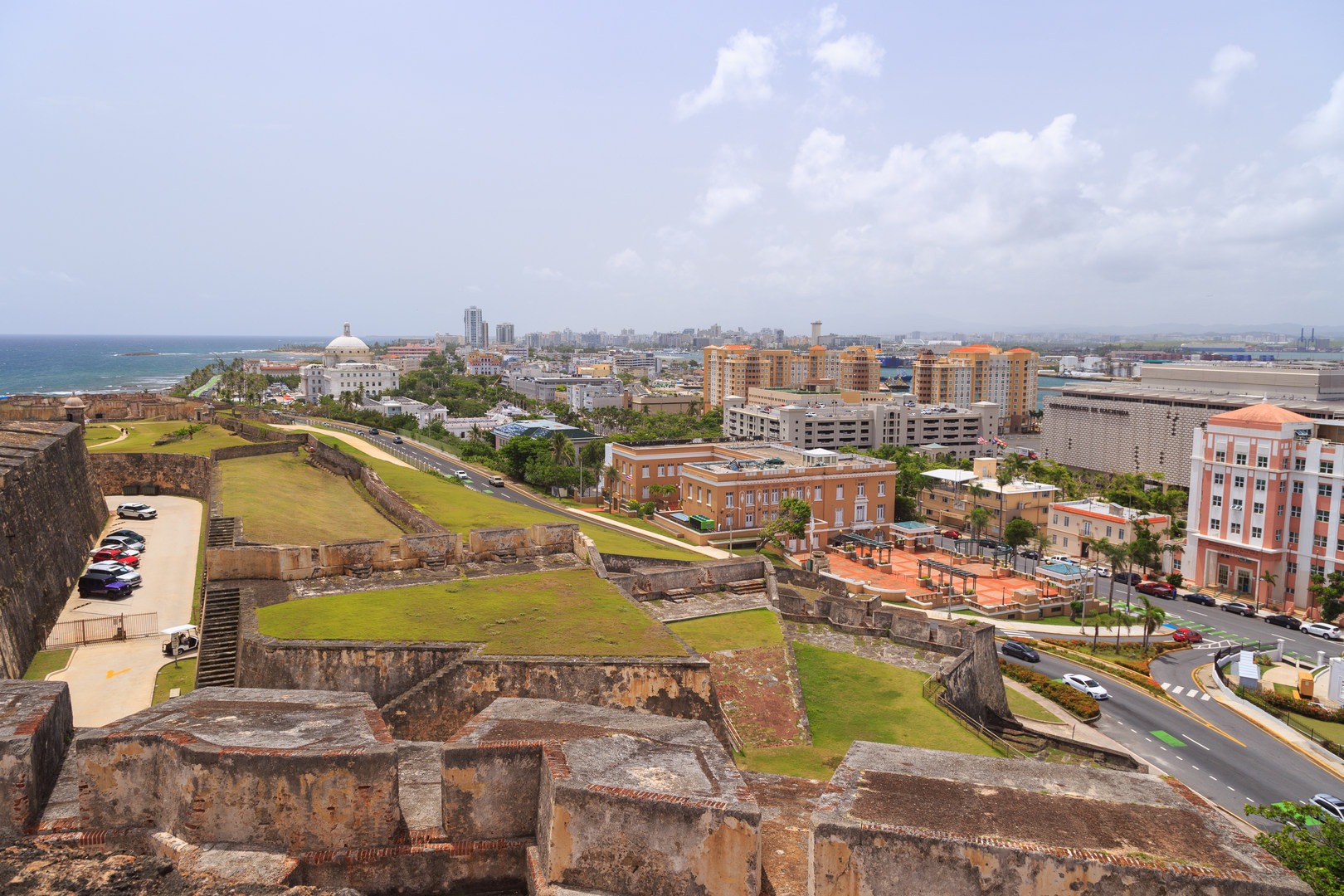You are here
San Juan National Historic Site on the island of Puerto Rico is an impressive display of 16th-century architecture that is filled with history and spectacular coastal views. It is made up of multiple components including the Castillo San Cristóbal, the Castillo San Felipe del Morro, most of the old San Juan city walls, the San Juan Gate, and Fort San Juan de la Cruz. A marvel that took over 150 years to complete, this defensive fort was constructed by the Spanish primarily to defend the city of Old San Juan. Today, San Cristóbal is considered the largest Spanish fortress of the Americas.
Castillo San Cristóbal is the hub of the site, and it has a substantial visitor center and theater. The fort was originally constructed to defend Old San Juan from an attack by land. There are multiple defensive tunnels throughout the fort that were strategically constructed to provide the safe movement of soldiers and supplies. This is also where the dungeon is located. There is original grafiti by an unknown prisoner still visible on the wall. The plaza of San Cristóbal is surrounded by archways where troops would hold drills and formal events would be held. Ancient rainwater cisterns would hold up to 800,000 gallons, and these are still used today for park maintenance. The third rooftop level allows views of Old San Juan and the majestic coastline. There are many cannon embrasures; this fort once housed 450 of them. A couple of additions were made during WWII including a coastal observation post and a bunker (where the visitor center is now located).
From San Cristóbal, it is a short walk to Castillo San Felipe del Morro on the northwest side of Old San Juan. There is a walkway along the defense wall where multiple sentry boxes (garitas) can be seen. Note the brightly colored buildings of Old San Juan.
An expansive grassy area surrounds Castillo San Felipe del Morro with cemeteries on the lower levels. A smaller plaza is found here with a lighthouse on the rooftop. An impressive ramp descends to a mezzanine filled with cannon embrasures. There is a walkway surrounding the fort along the coastline. This fort was designed to guard the entrance to the bay.
There are multiple informational plaquards located throughout the park that detail significant historical facts regarding the fortress. Visitors can enjoy viewing the spectacular architecture of these old stone buildings, imagine what it would be like standing guard in a sentry box, overlook the many above-ground burials, or even just fly a kite in the constant breeze.
Logistics + Planning
Current Weather: Powered by Dark Sky






























Comments
Sign In and share them.